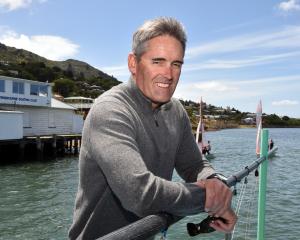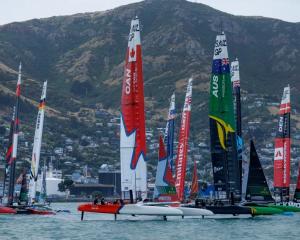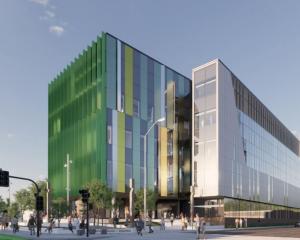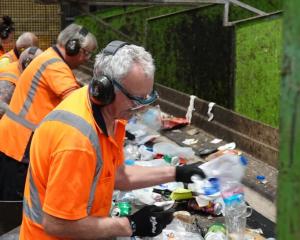Born in Auckland in 1935, he was Barrie Bates for the first 26 years of his life, before bleaching his hair and reinventing himself as "Billy Apple" while studying at the Royal College of Art in London.
He moved to New York in 1964, became a prominent part of the pop art movement spearheaded by Andy Warhol, and in 1969 created one of the first alternative exhibition spaces in the city.
Art critic Anthony Byrt said Apple was a pivotal figure in New Zealand art.
"I think Billy's legacy for New Zealand art in particular is just enormous. He really created contemporary art in this country in many ways."
Apple's work achieved overseas "raised the bar for a lot of us," he said.
"I think he was such a unique character. People will be familiar with that very pared-back work, the idea that he was a brand as much as an artwork and a maker."
Apple also was extraordinarily generous to others including young artists in the community during his long career, Byrt said.
"You couldn't go to a gallery opening without seeing Billy on the scene. He leaves a tremendous space behind him."
He talked to RNZ about spending time with Warhol and other contemporaries such as Robert Rauschenberg and David Hockney in a 2009 interview.
"It was very inspiring," Apple said. "These guys were shaping contemporary American art."
Many paid tribute to Apple's legacy online today.
"A constant challenger to how and why we experienced art," art critic and author Hamish Keith wrote on Twitter. "A transformative spirit."
Te Papa's chief executive Courtney Johnston also paid tribute to Apple.
"Moe mai rā e Billy - my thoughts are with Mary and all Billy's friends and family who are facing his loss during lockdown," she wrote.
Apple's works were often about challenging - often headline-grabbing - ideas. He was an early user of neon, and in 1983 he created a solid gold apple - at $85,000 then the most expensive work by a living New Zealander - decades before Damien Hirst's famous diamond skull.
He did exhibitions inspired by racing car drivers Bruce McLaren and Denny Hulme, and more recently works combining art and science, such as in 2009 when he and artist and scientist Dr Craig Hilton translated Apple's entire genomes into art.
"So much of Billy's work over the last 40 to 50 years has been about this relationship between art and science," Byrt said.
"Billy saw this opportunity to immortalise his cells with Craig and today people are really recognising the importance or foresight of that action and the fact that the artist will in some form keep living on forever and contributing to the world."
Apple's later work focused on the economics of the art world, and he returned to live in New Zealand in 1990.
Apple made his name a registered trademark in 2007, formalising his art brand status and investigations into the legal concept of intellectual property.
When he talked to RNZ in 2009, Apple discussed how his work met at the intersections of art and commerce.
"I certainly wasn't interested in illustration or any of those binary sort of things. I was interested in ideas. I was very impatient. I was fascinated by communication.
"I read avidly books on marketing and all sorts of things. I was excited by it, you know.
"I was drawn to smart advertising because they somehow had a way of talking to people in a way that you would never forget. You still know, when you hear a great commercial or read an ad, that has some fantastic lines that are burnt into my brain.
"I didn't work in advertising, but I used the systems of advertising to do my work."
When he arrived from New Zealand, Apple saw himself as a kind of blank slate.
"I was brand new and I was like blotting paper. I certainly didn't want to soak up the history of Europe. I was interested in the tomorrow, not in yesterday."
Apple's work is held in public collections such as Te Papa, the Tate Britain, Scottish National Galleries of Modern Art, Philadelphia Museum of Art, Chrysler Museum of Art and Guggenheim Museum.
In 2015, a large exhibition of his art was shown at Auckland Art Gallery Toi O Tāmaki, "The Artist Has to Live Like Everybody Else."
His final exhibition, Billy Apple: A Brand Looking for a Product Exhibition, is currently at Napier's MTG Hawke's Bay until 31 October.












